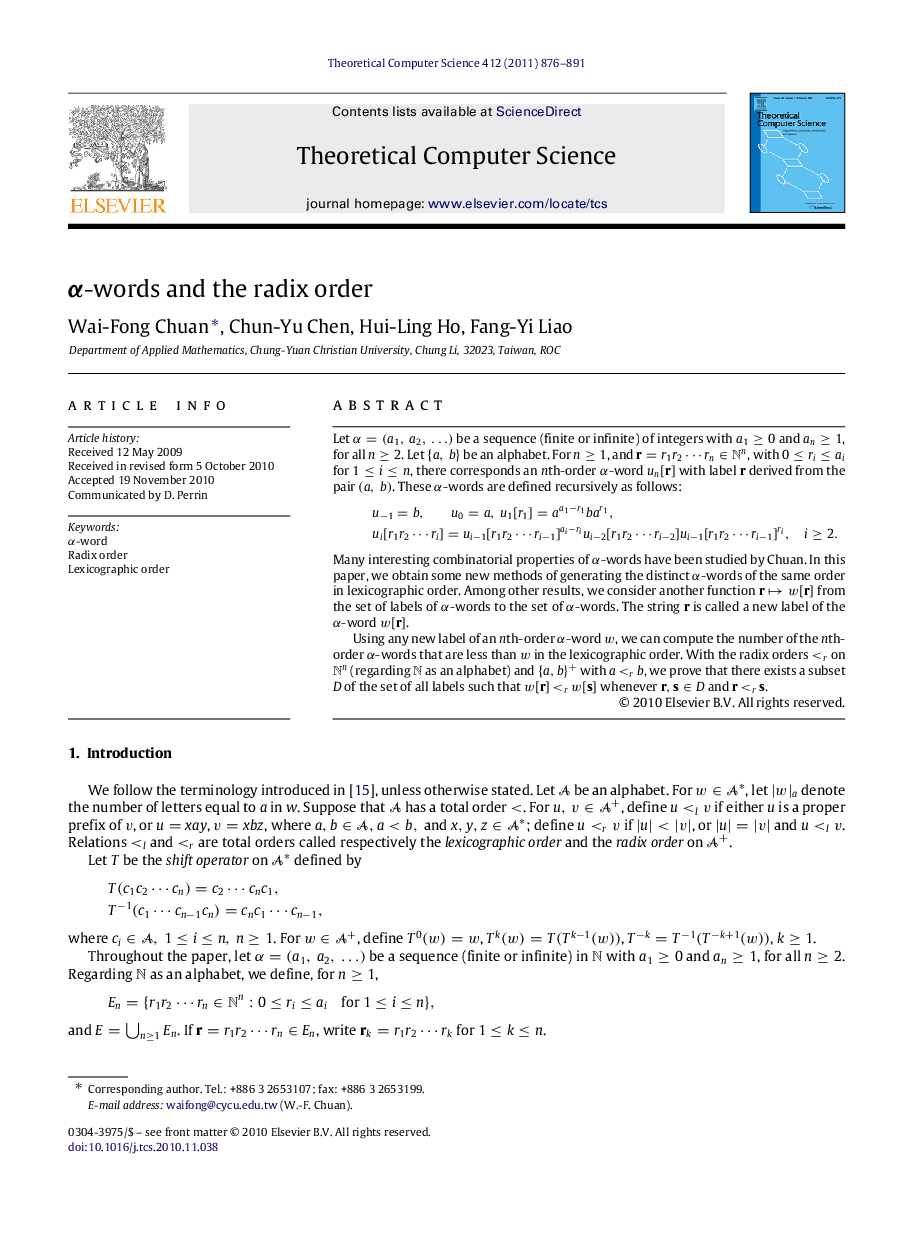| Article ID | Journal | Published Year | Pages | File Type |
|---|---|---|---|---|
| 437546 | Theoretical Computer Science | 2011 | 16 Pages |
Let α=(a1,a2,…) be a sequence (finite or infinite) of integers with a1≥0a1≥0 and an≥1an≥1, for all n≥2n≥2. Let {a,b} be an alphabet. For n≥1n≥1, and r=r1r2⋯rn∈Nn, with 0≤ri≤ai0≤ri≤ai for 1≤i≤n1≤i≤n, there corresponds an nnth-order αα-word un[r] with label r derived from the pair (a,b). These αα-words are defined recursively as follows: u−1=b,u0=a,u1[r1]=aa1−r1bar1,ui[r1r2⋯ri]=ui−1[r1r2⋯ri−1]ai−riui−2[r1r2⋯ri−2]ui−1[r1r2⋯ri−1]ri,i≥2. Many interesting combinatorial properties of αα-words have been studied by Chuan. In this paper, we obtain some new methods of generating the distinct αα-words of the same order in lexicographic order. Among other results, we consider another function r↦w[r] from the set of labels of αα-words to the set of αα-words. The string r is called a new label of the αα-word w[r].Using any new label of an nnth-order αα-word ww, we can compute the number of the nnth-order αα-words that are less than ww in the lexicographic order. With the radix orders
